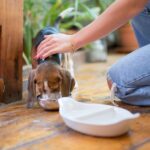In an ever-busy city like London, finding the right environment for your dog to spend the day can be a challenge. Whether you're commuting daily, working from home, or simply want your furry companion to enjoy more exercise, stimulation, and socialisation, the right day care solution makes all the difference. And for many pet owners across South West London and Surrey, Acres 4 Dogs is that solution.From humble beginnings to industry leader, Acres 4 Dogs has evolved over more than a decade to … [Read more...]
5 Dog-Friendly Vacation Ideas in Canada for the Whole Family
Leaving your dog at home when you go on vacation can feel like leaving a family member behind. It’s hard enough leaving them to go to work. Thankfully, there are plenty of dog-friendly travel options in Canada that will accommodate your four-legged friend. Whether you’re set on a beach trip, a winery, or something more relaxed, here’s how you can bring your dog along for the fun. Visit a dog-friendly beach Many beaches across Canada are dog-friendly, and that’s good news for your … [Read more...]
Travel on a Budget: How Petsitting Can Help You Save on Accommodation
It might not be easy finding a cheap place to stay when traveling with little money. Nevertheless, pet sitting is an emerging practice that enables tourists to have affordable trips packed with adventures. What is Petsitting? If you like animals and you want to visit new places but feel comfortable only at home, there is a solution for you. Instead of paying for hotels, hostels, or Airbnb stays, you can try house sitting - stay in someone’s home and look after their pets. This may appeal to … [Read more...]
The Rise of Pet Wellness: How Owners Are Prioritizing Healthier Lifestyles for Their Dogs
As more people embrace a health-conscious lifestyle, they’re extending the same level of care to their pets. The pet wellness industry has experienced tremendous growth, with owners prioritizing nutrition, exercise, and mental stimulation for their furry companions. What was once a market dominated by traditional pet food and standard veterinary care has evolved into a sophisticated landscape of holistic diets, alternative therapies, and high-end wellness products. From organic dog treats to … [Read more...]
5 Dog Parks Near San Clemente to Visit
San Clemente is a coastal city with incredible beaches and a great Spanish heritage. With a climate that enjoys around 300 days of sunshine per year and relatively warm weather, you and your pup can be outside enjoying nature for most parts. This city and its environs boast a great shoreline and many green areas, including parks. As a dog-friendly location, some of these parks are dedicated dog parks. Pooches love dog parks as they get to run, play, and socialize with others without a … [Read more...]
Everything Pet Owners Need to Know
Having a pet is not only a joy but also a big responsibility. When bringing a pet into the home, it’s important for the owner to understand that the animal requires attention, care, and proper handling. Pets are companions who depend on us for their well-being, safety, and comfort. Knowing the basics of pet care and health can help prevent many problems in the future. Proper nutrition, regular grooming, companionship, and preventive measures are just some of the essential aspects to consider. … [Read more...]
A Clean Home and a Dog: How to Make It Work
Everyone knows that dogs are man’s best friend, but getting a furry companion often means saying goodbye to a spotless home. Dogs love to play, knock things over (whether it’s moving or not), and shed fur, creating messes everywhere. However, there are tried and true ways to keep your home clean, even with a dog around! These tips, prepared with the experts at pottybuddy.co, will help you keep a clean home while enjoying life with your dog. Regular Grooming Is Key This is a step you should … [Read more...]
Furry Comfort: Why CBD for Dogs Is the Future of Pet Care
The world of pet care has seen tremendous growth in recent years, with more pet owners seeking natural and effective solutions to improve the well-being of their furry companions. Among the many innovative products available today, CBD for dogs is emerging as a game-changer. As more research comes to light, the benefits of CBD for dogs are gaining widespread recognition, making it the future of pet care. In this blog, we will explore why CBD for dogs is becoming increasingly popular and how it … [Read more...]
5 Essential Things to Check When Finding the Right Cheap Pet Insurance
Your pet's health is priceless, but trips to the vet can get expensive fast. That’s where pet insurance comes in. However, there are numerous choices; how can you discover cheap coverage that meets your pet's needs? When searching for cheap pet insurance, it’s important to look beyond just the price tag. This blog will show you five important things to look for to make sure you are getting the best deal without sacrificing care. 1. Coverage Options Not all policies cover the same things, so … [Read more...]
The Role of Probiotics in Promoting Pet Health
Introduction to Probiotics Probiotics are good bacteria that are essential for keeping the digestive system functioning properly. For the best possible digestion and nutritional absorption, the gut microbiome must be in balance, which is provided by these microbes. They are popularly used in both human and animal health to aid in digestion and boost the immune system. Many pet owners who want to improve their pets' gut health often turn to products like Dr. Marty Nature's Blend for their pets' … [Read more...]




























